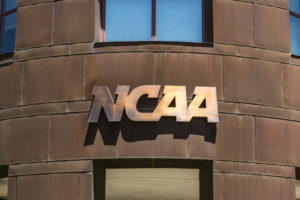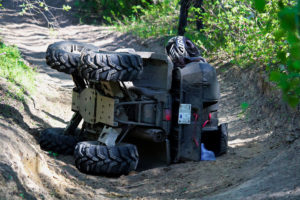By Larry E. Coben, Sol H. Weiss and James R. Ronca
A few days ago, a Washington to New York Amtrak commuter train derailed and at least 6 people died and over a hundred were rushed to nearby hospitals. This calamity happened as unbelted passengers were violently thrown about inside these trains like unrestrained flying objects. After this calamity, some folks have questioned why don’t trains have seat belts? Would seat belts have saved lives and reduced the documented carnage? This very same danger is repeated over and over again in school bus wrecks. While news of these horrible events garners attention and constantly begs the question of the need for more safety in buses and trains, nothing ever changes. History repeats itself.
1987 New York Times: “Seat belts on trains weighed after deadly crash”.
“WASHINGTON, Jan. 9— The Federal Government’s chief railroad safety officer said today that he would seek comments on whether seat belts should be installed on the passenger coaches of Amtrak and the five commuter rail systems that use the Northeast Corridor between Washington and Boston.The official, John Riley, administrator of the Federal Railroad Administration, said he was not making a formal proposal for seat belts on passenger trains at this time but wanted to hear what railroad officials had to say in light of the collision of an Amtrak passenger train and three Conrail diesel engines last Sunday. Fifteen people were killed and 178 others were injured in the accident near Baltimore. ”It’s an obvious issue,” Mr. Riley said of the idea of installing seat belts. ”When you see an accident like this, there are all kinds of ideas that come up.” The Government requires that seat belts be installed on all passenger cars sold in this country and on airplanes.
April 2002 Liberal News and Commentary:
”Amtrak‘s Auto Train derailed at 5:08 p.m. on Thursday afternoon when it failed to successfully negotiate a curve. Even though pictures from the crash site show that the train’s passenger cars remained virtually intact, four people were killed and 159 injured, many critically, because the passengers were tossed violently within their train cars when the cars flopped about during the derailment. The Florida Times-Union is the leading newspaper in the area of Florida where the derailment occurred. The Times-Union is based in Jacksonville. Yesterday, the Times-Union published a story entitled 4 dead, more than a hundred injured in Florida Amtrak derailment. In Paragraph 8 of that story, a person identified as Bernie Morgan was quoted as saying, “We just started hurtling and left the track and the next thing we knew, we were bouncing off the walls.” That’s how people get killed or injured. They bounce off the walls, other seats, other people and other things, many of which have very hard surfaces (like the roof and the floor). Even after the train stops moving, people keep flying about until they crash into something hard enough to stop them from moving. This often results in severely broken bodies, lots of spilled blood, horrific pain and tremendous suffering, all needlessly inflicted because Amtrak is too cheap to install seat belts on their trains and because Congress has, to this point, been too gutless to require Amtrak to install seat belts on their trains. If the passengers had been secured in their seats with seat belts, surely none of them would have been killed and most injuries would have been minor in nature.”
July 31, 2007: The British Rail Safety and Standards Board (a railway industry organization) issued a major study which stated that:
“The results from the testing of the three-point seat belt applications indicated that restraining occupants with this type of belt would be likely to reduce the injury levels compared with injuries sustained by an unrestrained occupant impacting a crashworthy seat, although both were within acceptable limits.”
In 2013, the National Highway Traffic Safety Administration announced the issuance of a standard requiring lap/shoulder belts on all new motor coaches and other large buses. However, the DOT excluded school buses from this requirement. “Seat belts, trains and school buses: together or not”? This question, at first blush, seems like a no brainer: seat belts are a good thing and they should be installed. Then why don’t we see belts on trains and school buses? Every day in America, millions of kids ride school buses to and from their homes, and hundreds of thousands of commuters take Amtrak along the Eastern corridor. If these kids and adults were passengers in cars, SUVs, mini-vans or trucks and riding without using a seat belt, they would all be subject to civil fines. Yet, not only are there no fines for riding unbelted, but there are no belts! Even more compelling is the realization that when we get on an airplane, we are instructed to buckle up. Why is belt use required on a plane traveling at 600 mph but not on a train traveling at 90 to 150 mph? Here is the typical explanation articulated in opposing seat belts on buses and trains:[1]
Seat belts have been required on passenger cars since 1968. Forty-nine States and the District of Columbia have enacted laws requiring the wearing of seat belts in passenger cars and light trucks. There is no question that seat belts play an important role in keeping occupants safe in theses vehicles, however school buses are different by design and use a different kind of safety restraint system that works extremely well.
Large school buses are heavier and distribute crash forces differently than do passenger cars and light trucks. Because of these differences, the crash forces experienced by occupants of buses are much less than that experienced by occupants of passenger cars, light trucks or vans. NHTSA decided that the best way to provide crash protection to passengers of large school buses is through a concept called “compartmentalization.” This requires that the interior of large buses provide occupant protection such that children are protected without the need to buckle-up. Through compartmentalization, occupant crash protection is provided by a protective envelope consisting of strong, closely-spaced seats that have energy-absorbing seat backs.
School bus crash data show that compartmentalization has been effective at protecting school bus passengers. NHTSA’s 2002 Report to Congress[1] found that the addition of lap belts did not improve occupant protection for the severe frontal impacts that were studied for that report.
An amazingly similar finding was issued in 2007 by the British Rail Safety and Standards Board (a railway industry organization). However, the U.S. National Transportation Safety Board’s opinion on this topic is quite different.[2]
“Enhanced Protection for School Bus Passengers
In its 1999 special investigation report on bus crashworthiness, the NTSB found that compartmentalization, the method of occupant protection developed for school buses, does not protect all passengers in all types of vehicle impacts and rollovers. Although the NTSB concluded that because of compartmentalization, school bus passengers were safer than they were prior to landmark legislation introduced in 1977 requiring significant changes to school bus vehicle design, compartmentalization is incomplete in that passengers do not always remain completely within the seating compartment throughout all accident sequences. The NTSB recommended developing standards for an occupant protection system that would better protect school bus passengers in all scenarios and then require new school buses to meet these standards.
In 2006, the NTSB placed this issue area on the Most Wanted List. On October 21, 2008, the National Highway Traffic Safety Administration (NHTSA) published a final rule implementing improvements to school bus passenger protection, including an increase to the minimum seat back height, mandatory installation of lap/shoulder belts on small school buses, and performance requirements for voluntarily installed seat belts on large school buses. However, these new standards did not address side-impact and rollover accidents, and failed to provide a uniform level of safety to all school bus occupants. By providing guidelines for, rather than mandating, seat belts for larger buses, the rule puts the onus of safety level choice on state and local jurisdictions, forcing them to choose between economic concerns and passenger safety. [Emphasis added.]
In most of the nation’s school buses and in all Amtrak trains, folks ride without seat belts. Equipping school buses and trains with lap and shoulder belt systems will cost thousands of dollars per bus and per train car. But supporters argue that the expense becomes minuscule when spread over the life span of an average bus or train. “If you buy a new, $70,000 school bus, it’s going to last 15 or so years,” says Alan Ross, president of the nonprofit National Coalition for School Bus Safety (NCSBS). “If you crunch the numbers, it comes out to pennies a day throughout the lifetime of that bus.”
Analysis
Over twenty years ago, I wrote about common law liability of vehicle manufacturers for failing to install air bag systems and well designed rear seat lap/shoulder belts in their products– to provide needed protection against the devastation of predictable collisions.[3] The legal battles that ensued forced courts to consider questions related to federal preemption and the extent of the common law duty of manufacturers. The outcome in the “court of public opinion” was definitive; the outcome in court was mixed. Cars, trucks and SUVs now have fairly well designed seat belts and air bags at all seating positions. And, with the exception of claims related to the absence of frontal air bag protection, courts have rejected federal preemption as a legal defense to these claims.[4]
Should school districts, Amtrak, and bus and train manufacturers be held accountable for failing to require or install reasonably well designed seat belts? There have been only a few federal and state court decisions addressing this particular issue. In Attocknie v. Carpenter Manufacturing, Inc., 901 P.2d 221 (Okla. Civ. App. 1995), the Court stated:
“We hold that the trial court erred in determining the action was preempted by federal law. It also erred in finding the bus was not dangerously defective as a matter of law. Disputed material facts regarding whether the bus without seat belts was defective and unreasonably dangerous. . . .
The school bus seating system in the bus complied with the Oklahoma Minimum Specifications for School Buses, which are promulgated by the Oklahoma State Department of Education, with regard to seating, seat belts and crash barriers. [**5] The Oklahoma Minimum Specifications require a “Type 2 lap belt/shoulder harness seat belt” for the driver only. The Oklahoma Minimum Specifications do not require seat belts for passengers in these types of buses.
* * *
We think the reasoning in Myrick is sound and comports with the directives of the United States Supreme Court decision Cipollone. Standard 222, established by federal law under the Safety Act, sets forth the requirements for school bus passenger seating protection and restraining barriers for buses with a G.V.W.R. of 10,000 or more. The Standard does not require seatbelts for passengers in these buses. Nor do the State Minimum Specifications require seatbelts for passengers in these buses. Although the Safety Act’s safety standard arguably addresses the defect here claimed [**16] (the absence of seat belts in buses over 10,000 G.V.W.R.), the Safety Act specifically and expressly through its preemption provisions, saved this state tort cause of action through its savings provision, 15 U.S.C. § 1397(k). This action is accordingly, not expressly preempted by federal law.
“Whether the bus in question was defectively designed or not is a question of fact for the jury.” Id. Similar rulings have been issued in Warren v. Thomas Built Buses, Inc., 377 S.E. 2d 249 (N.C. App. 1989) and MCI Sales and Services, Inc. v. Hinton, 272 S.W.3d 17 (2008 Tex. App.), aff’d., 2010 Tex. LEXIS 976 (Texas 2010)(Commercial buses—not school bus).[5]
How can “compartmentalization” help this accident scenario?
When accidents happen—like these—is it better to have “compartmentalization” or lap and shoulder belts?
The basic premise of the common law is that every person and every business entity which acknowledges a responsibility to act for the protection of another, must be held accountable if in fact he fails to exercise reasonable care. Restatement (Second) of Torts § 324 (1965). Ordinarily, the exercise of reasonable care is predicated upon foreseeability and the factual balance between the the risks and benefits of taking one course of action versus another (or inaction). The common law, and tort law specifically, represents the principles and rules of law related to the security of persons and property, which has been developed and derived through judicial decisions. It is the body of law establishing and defining legal duty, fault, and damages recoverable when someone is harmed by legally cognizable action or inaction of another. At its base, the common law serves as an evolving constitution of civil rights. Tort law is intended to secure the individual’s power to question how he or she has been treated or mistreated by another. Cicero wisely stated that “the good of the people is the greatest law.”[6] The primary goal of the common law should be to secure a place where everyone has a workable venue to right wrongs. Many have written of the nature of tort law, and the historical predicate for its role in American Jurisprudence. In Marbury v. Madison[7], Chief Justice John Marshall reaffirmed the predicate upon which the American Civil Justice System was founded:
“… the very essence of civil liberty certainly consists in the right of every individual to claim the protection of the laws, whenever he receives an injury. One of the first duties of government is to afford that protection.”
The most consistent means of predicting and controlling human behavior bent on causing injury to others is to provide judicial redress.
When bus and train manufacturers market their vehicles without providing the purchaser with the option to use a safe restraint system, why shouldn’t they do so at their financial peril? After all, isn’t that what it has done to the students and Amtrak passengers who get on board every day?
[1] NHTSA “Seat Belts on School Buses—May 2006. http://www.nhtsa.gov/Vehicle+Safety/Seat+Belts/Seat+Belts+on+School+Buses+–+May+2006#_ftnref1
[2] http://www.ntsb.gov/safety/ayar1.html
[3] Should The Auto Industry Escape Responsibility For Its Refusal To Install Passive Restraints By Relying Upon Federal Preemption?, Products Liability Law Journal, August 1991; The Tide Has Turned: Federal Preemption Cannot Defeat Motor Vehicle Design Claims — Such As Air Bags and Passive Belt Actions, TRIAL, January 1993.
[4] Williamson v. Mazda Motor of America, Inc., , 2011 U.S. LEXIS 1711.
[5] But see, Brown v. Landry, 552 So. 2d 1299 (La. App. 1989); Dentson v. Eddins & Lee Bus Sales, Inc., 491 So.2d 942 (Ala. 1986)(same as Louisiana); Price v. Thomas Built Buses, 260 S.W. 3d 300 (Ark. 2007)(State statutes not requiring seatbelts in school buses precludes cause of action).
[6] Cicero (106-43 B.C.), De Legibus, bk.3, ch.3, sct.8.
[7] 5 U.S. (1 Cranch ) 137, 163 (1803).

The Legal Examiner and our Affiliate Network strive to be the place you look to for news, context, and more, wherever your life intersects with the law.










Comments for this article are closed.